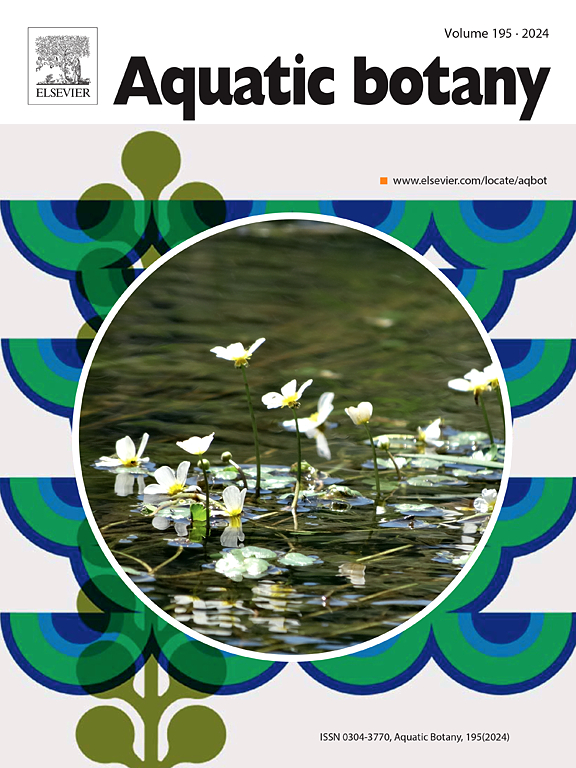北大西洋西部(美国)北部地区卤素草(Halodule wright)花和种子生产的证据
IF 2.6
4区 生物学
Q2 MARINE & FRESHWATER BIOLOGY
引用次数: 0
摘要
卤藻是一种热带,全盐性,雌雄异株海草,发现于西大西洋的海水中,从巴西和墨西哥湾到北卡罗莱纳州的北部边界。对于海草来说,有性繁殖可以作为一种恢复机制,种子库可以在压力事件发生后支持重建和恢复。然而,环境压力可能会限制有性生殖,因为高能量消耗。北卡罗莱纳的赖特花以前被认为完全依赖无性繁殖,没有证实的种子完全发育的报告,只有一个开花的历史记录。在这里,我们报告了在沉积物中对雌花和雄花、果实和完全发育的种子的实地观察,证实了赖特伊在其北部范围内能够成功地有性繁殖。这些发现挑战了先前的假设,并强调了未来研究影响有性生殖的生态和环境因素(如花的形成、授粉的时间、果实的发育)及其在形成箭猴边缘种群遗传多样性中的作用的必要性。本文章由计算机程序翻译,如有差异,请以英文原文为准。
Evidence of Halodule wrightii flower and seed production at its northern range extent in the western North Atlantic (USA)
Halodule wrightii is a tropical, euryhaline, dioecious seagrass found in marine waters of the western Atlantic Ocean, ranging from Brazil and the Gulf of Mexico to its northern limit in North Carolina. For seagrasses, sexual reproduction can serve as a resilience mechanism, with seed banks supporting re-establishment and recovery following a stress event. However, environmental stress may limit sexual reproduction due to high energetic costs. H. wrightii in North Carolina was previously thought to rely exclusively on asexual reproduction, with no confirmed reports of fully developed seeds and only a single historical account of flowering. Here, we report field observations of female and male flowers, fruits, and fully developed seeds in the sediment confirming that H. wrightii is capable of successful sexual reproduction at its northern range limit. These findings challenge prior assumptions and highlight the need for future research into the ecological and environmental factors influencing sexual reproduction (e.g. flower formation, timing of pollination, fruit development) and the role it plays in shaping genetic diversity in edge-of-range H. wrigthii populations.
求助全文
通过发布文献求助,成功后即可免费获取论文全文。
去求助
来源期刊

Aquatic Botany
生物-海洋与淡水生物学
CiteScore
3.80
自引率
5.60%
发文量
70
审稿时长
6 months
期刊介绍:
Aquatic Botany offers a platform for papers relevant to a broad international readership on fundamental and applied aspects of marine and freshwater macroscopic plants in a context of ecology or environmental biology. This includes molecular, biochemical and physiological aspects of macroscopic aquatic plants as well as the classification, structure, function, dynamics and ecological interactions in plant-dominated aquatic communities and ecosystems. It is an outlet for papers dealing with research on the consequences of disturbance and stressors (e.g. environmental fluctuations and climate change, pollution, grazing and pathogens), use and management of aquatic plants (plant production and decomposition, commercial harvest, plant control) and the conservation of aquatic plant communities (breeding, transplantation and restoration). Specialized publications on certain rare taxa or papers on aquatic macroscopic plants from under-represented regions in the world can also find their place, subject to editor evaluation. Studies on fungi or microalgae will remain outside the scope of Aquatic Botany.
 求助内容:
求助内容: 应助结果提醒方式:
应助结果提醒方式:


